速度極限報(bào)警器電路 --Speed-limit Alert
?
Parts:
R1,R2,R19_______1K?? 1/4W Resistors
R3-R6,R13,R17_100K?? 1/4W Resistors
R7,R15__________1M?? 1/4W Resistors
R8_____________50K?? 1/2W Trimmer Cermet
R9____________470R?? 1/4W Resistor
R10___________470K?? 1/4W Resistor
R11___________100K?? 1/2W Trimmer Cermet (see notes)
R12___________220K?? 1/4W Resistor (see notes)
R14,R16________68K?? 1/4W Resistors
R18____________22K?? 1/4W Resistor
R20___________150R?? 1/4W Resistor (see notes)
C1,C7_________100?F? 25V Electrolytic Capacitors
C2,C3_________330nF? 63V Polyester Capacitors
C4-C6___________4?7? 25V Electrolytic Capacitors
D1,D5______Red LEDs? 3 or 5mm.
D2,D3________1N4148? 75V 150mA Diodes
D4________BZX79C7V5? 7.5V 500mW Zener Diode
IC1__________CA3140? or TL061 Op-amp IC
IC2____________4069? Hex Inverter IC
IC3____________4098? or 4528 Dual Monostable Multivibrator IC
Q1,Q2_________BC238? 25V 100mA NPN Transistors
L1_____________10mH? miniature Inductor (see notes)
BZ1___________Piezo sounder (incorporating 3KHz oscillator)
SW1____________SPST? Slider Switch
B1_______________9V? PP3 Battery (see notes)
Clip for PP3 Battery
Device purpose:
This circuit has been designed to alert the vehicle driver that he has reached the maximum fixed speed limit (i.e. in a motorway). It eliminates the necessity of looking at the tachometer and to be distracted from driving.
There is a strict relation between engine's RPM and vehicle speed, so this device controls RPM, starting to beep and flashing a LED once per second, when maximum fixed speed is reached.
Its outstanding feature lies in the fact that no connection is required from circuit to engine.
Circuit operation:
IC1 forms a differential amplifier for the electromagnetic pulses generated by the engine sparking-plugs, picked-up by sensor coil L1. IC2A further amplifies the pulses and IC2B to IC2F inverters provide clean pulse squaring. The monostable multivibrator IC3A is used as a frequency discriminator, its pin 6 going firmly high when speed limit (settled by R11) is reached. IC3B, the transistors and associate components provide timings for the signaling part, formed by LED D5 and piezo sounder BZ1. D3 introduces a small amount of hysteresis.
Notes:
D1 is necessary at set-up to monitor the sparking-plugs emission, thus permitting to find easily the best placement for the device on the dashboard or close to it. After the setting is done, D1 & R9 can be omitted or switched-off, with battery saving.
During the preceding operation R8 must be adjusted for better results. The best setting of this trimmer is usually obtained when its value lies between 10 and 20K.
You must do this first setting when the engine is on but the vehicle is stationary.
The final simplest setting can be made with the help of a second person. Drive the vehicle and reach the speed needed. The helper must adjust the trimmer R11 until the device operates the beeper and D5. Reducing car's speed the beep must stop.
L1 can be a 10mH small inductor usually sold in the form of a tiny rectangular plastic box. If you need an higher sensitivity you can build a special coil, winding 130 to 150 turns of 0.2 mm. enameled wire on a 5 cm. diameter former (e.g. a can). Extract the coil from the former and tape it with insulating tape making thus a stand-alone coil.
Circuit's current drawing is approx. 10mA. If you intend to use the car's 12V battery, you can connect the device to the lighter socket. In this case R20 must be 330R.
Depending on the engine's cylinders number, R11 can be unable to set the device properly. In some cases you must use R11=200K and R12=100K or less.
If you need to set-up the device on the bench, a sine or square wave variable generator is required.
To calculate the frequency relation to RPM in a four strokes engine you can use the following formula:
Hz= (Number of cylinders * RPM) / 120.
For a two strokes engine the formula is: Hz= (Number of cylinders * RPM) / 60.
Thus, for a car with a four strokes engine and four cylinders the resulting frequency @ 3000 RPM is 100Hz.
Temporarily disconnect C2 from IC1's pin 6. Connect the generator's output to C2 and Ground. Set the generator's frequency to i.e. 100Hz and regulate R11 until you hear the beeps and LED D5 flashes. Reducing the frequency to 99 or 98 Hz, beeping and flashing must stop.
This circuit is not suited to Diesel engines.
 電子發(fā)燒友App
電子發(fā)燒友App









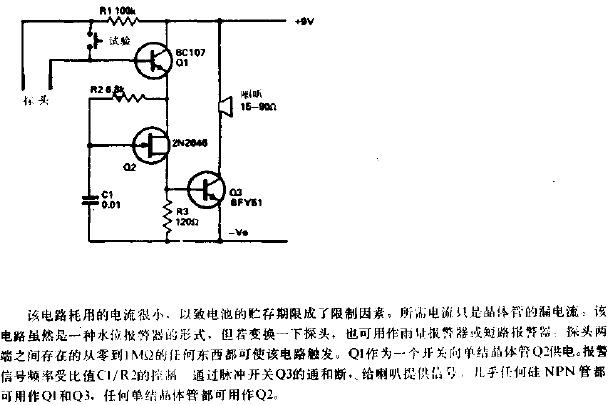
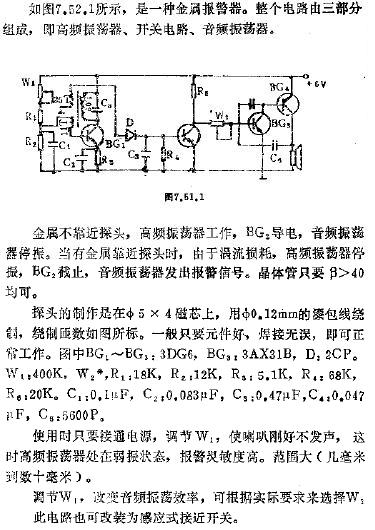
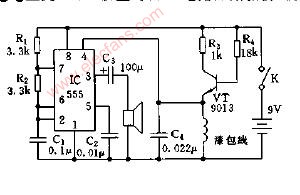

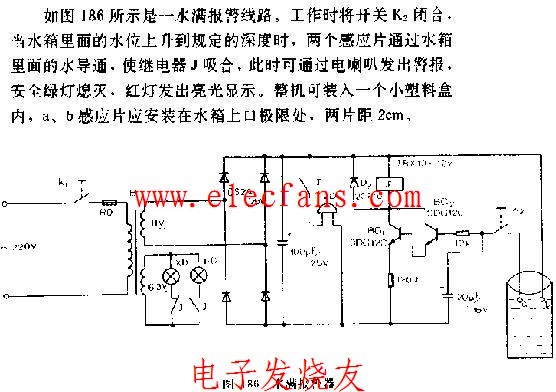
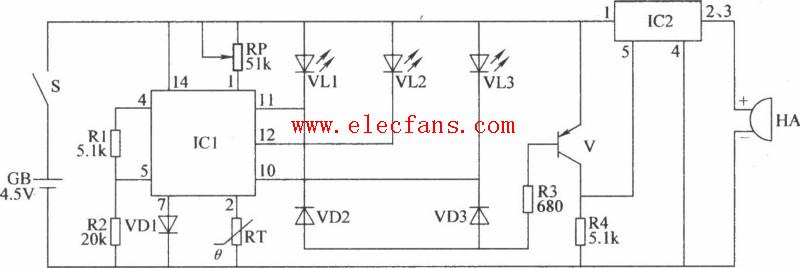


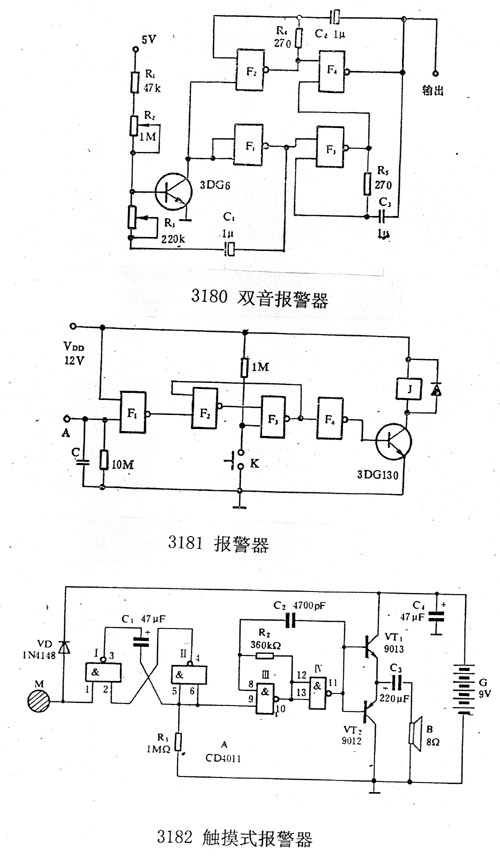
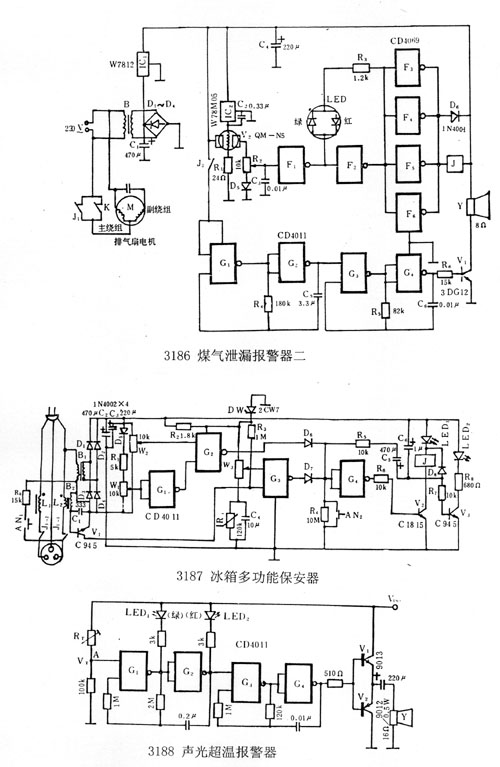

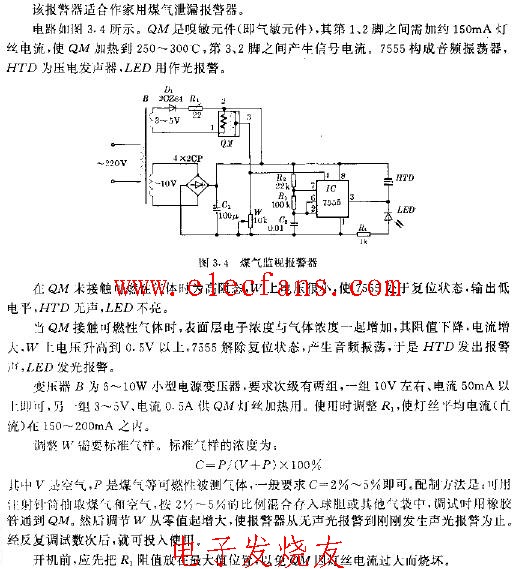
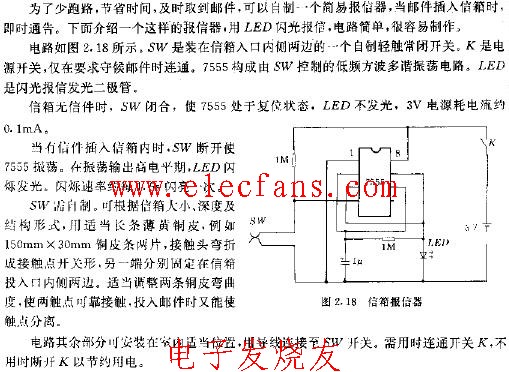
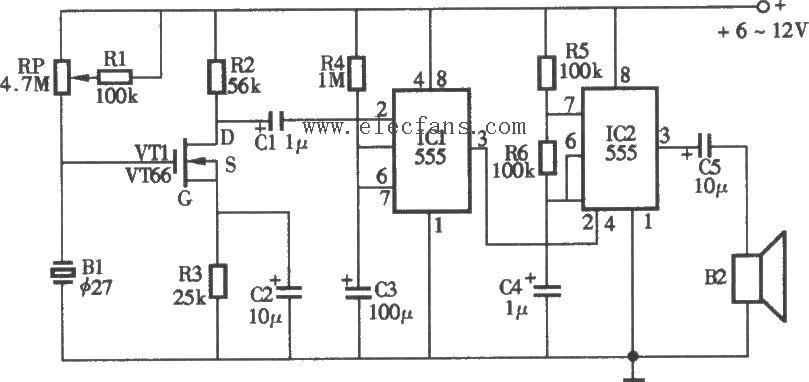
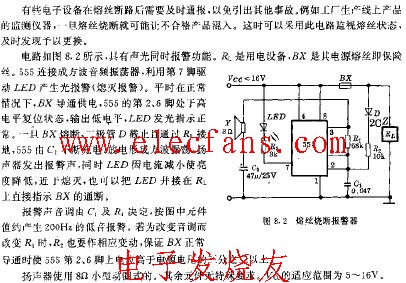
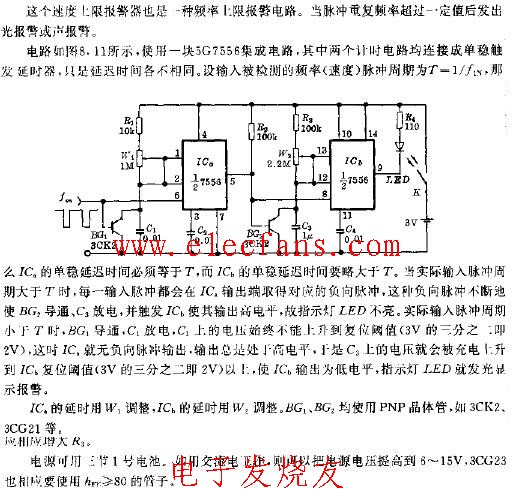
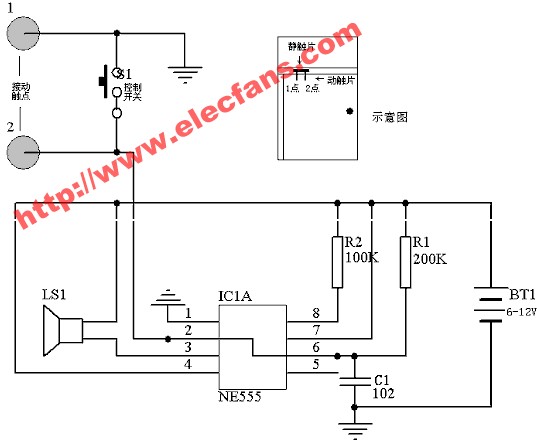
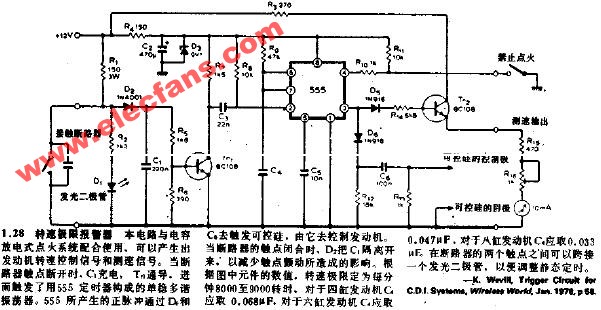
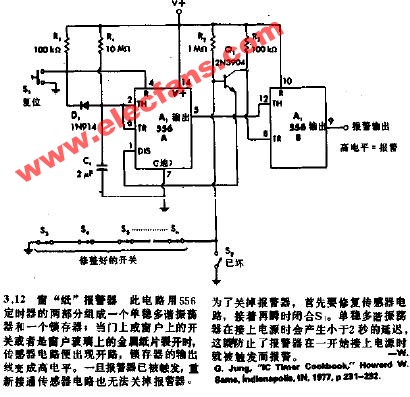
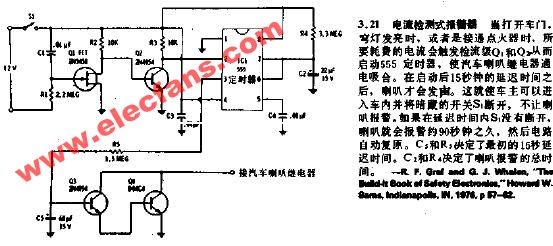
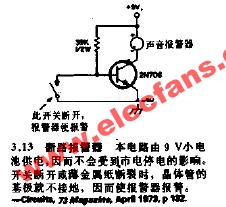
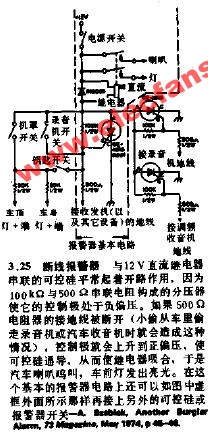
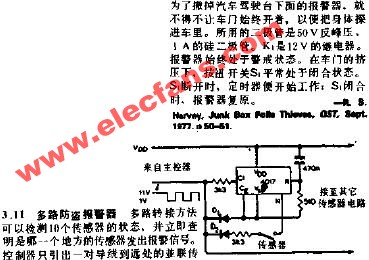
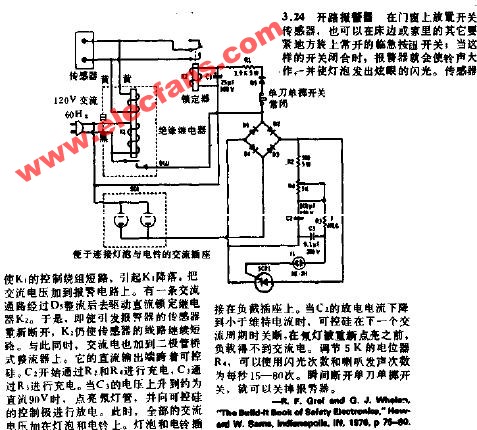
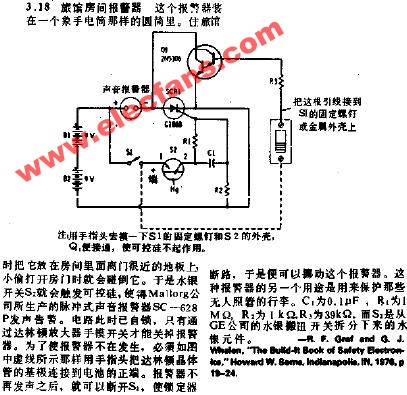
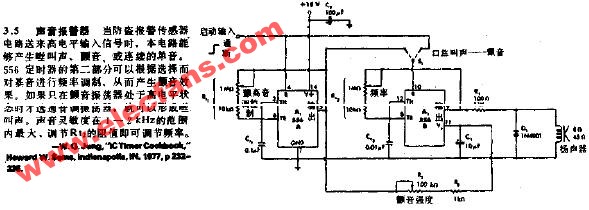
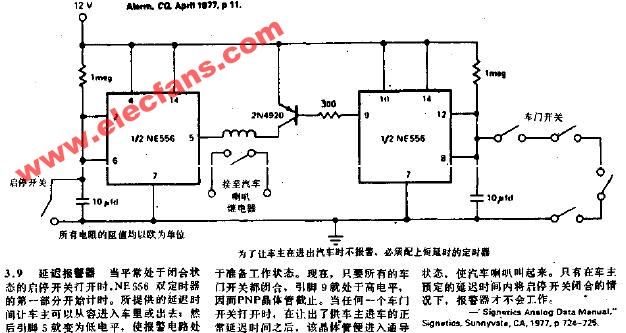
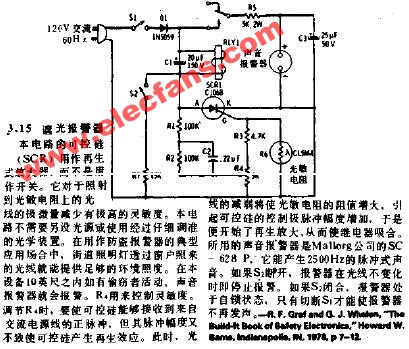
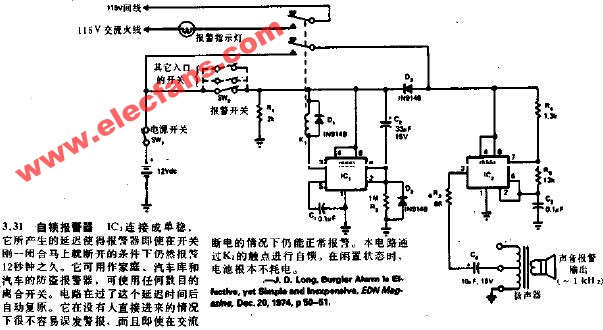
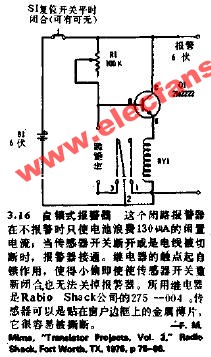
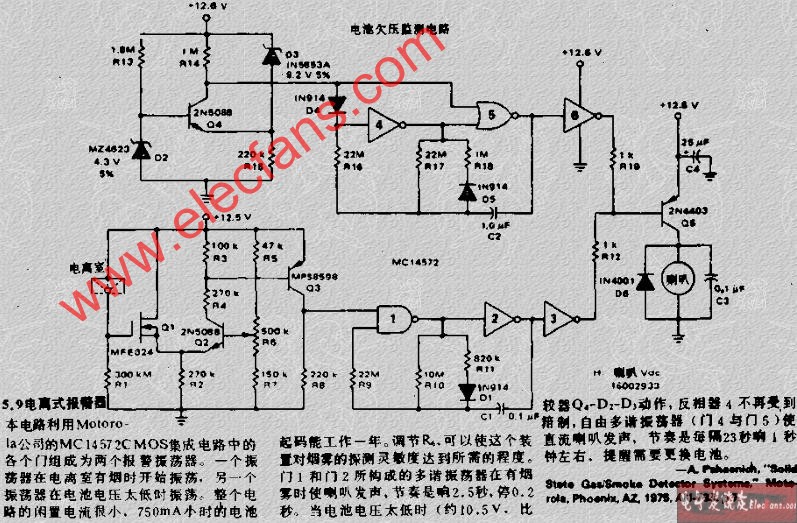
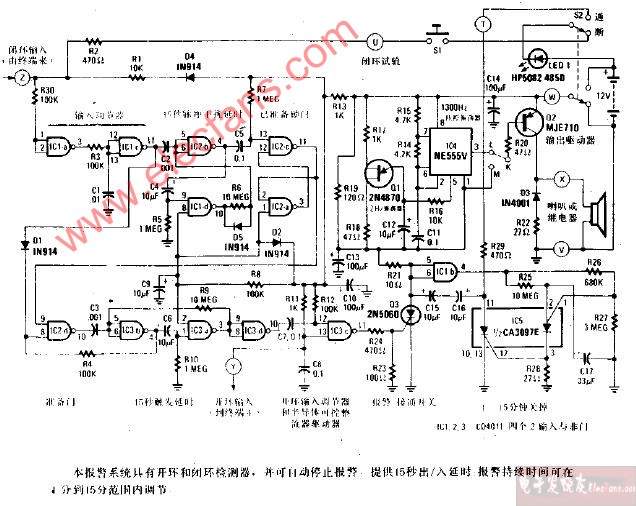
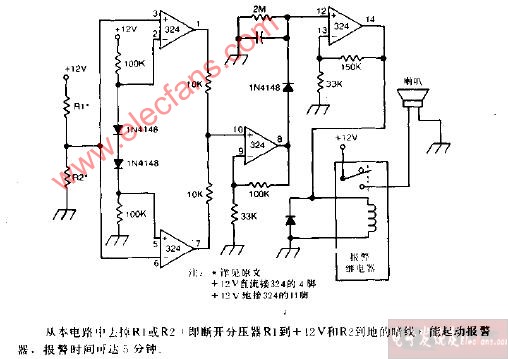
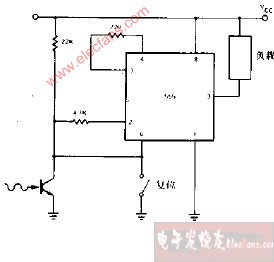
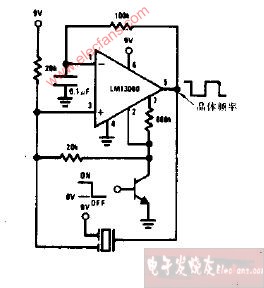
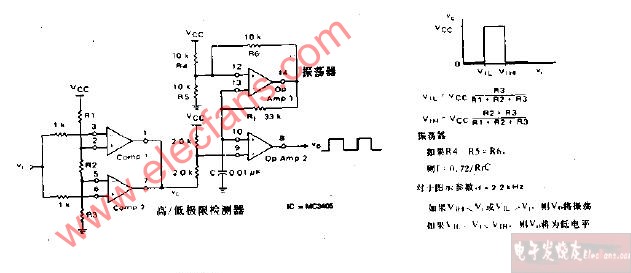
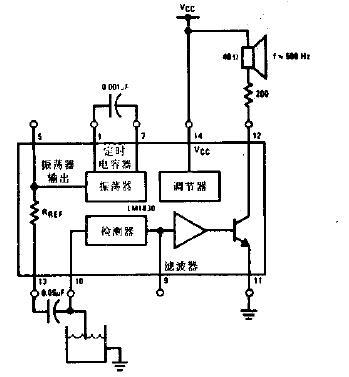
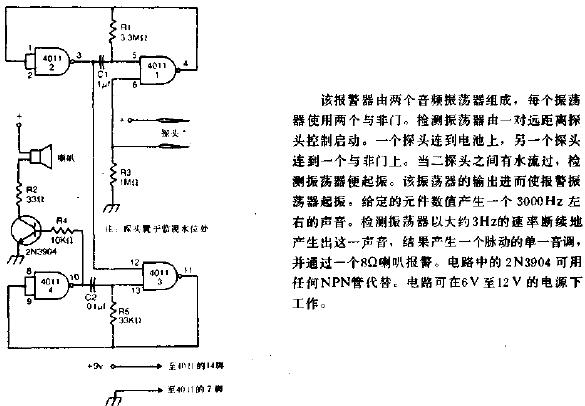
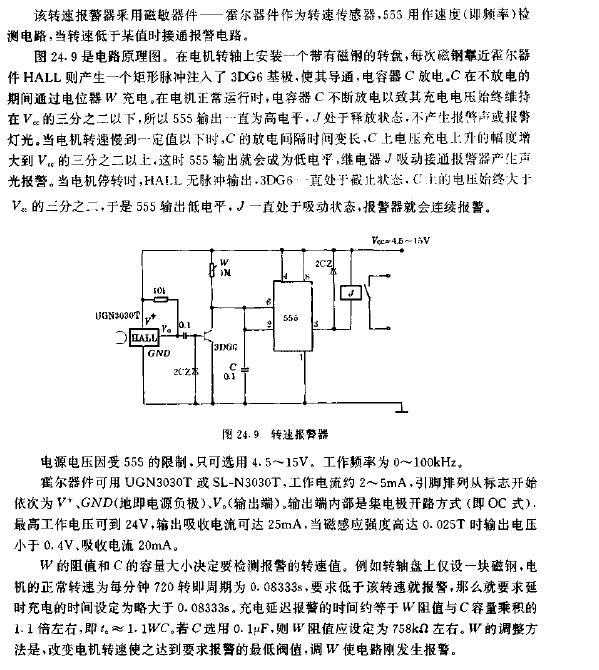
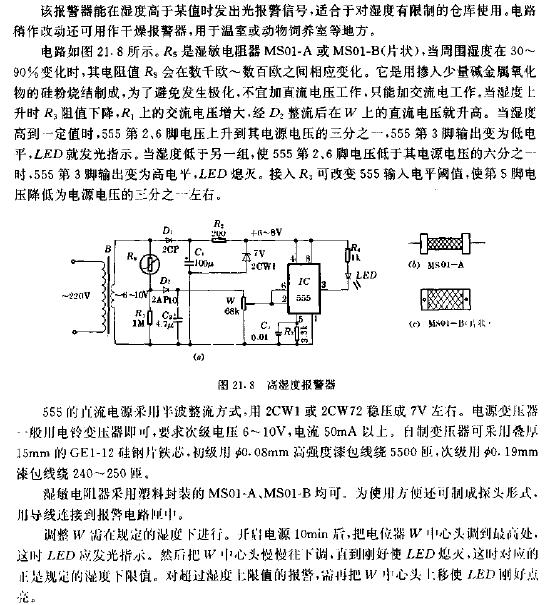
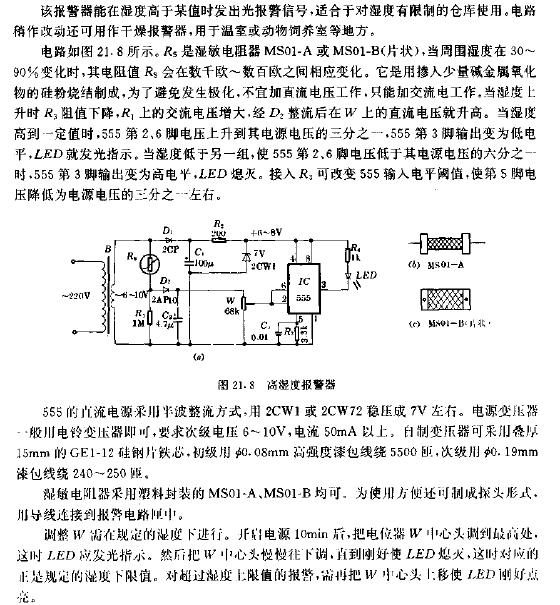
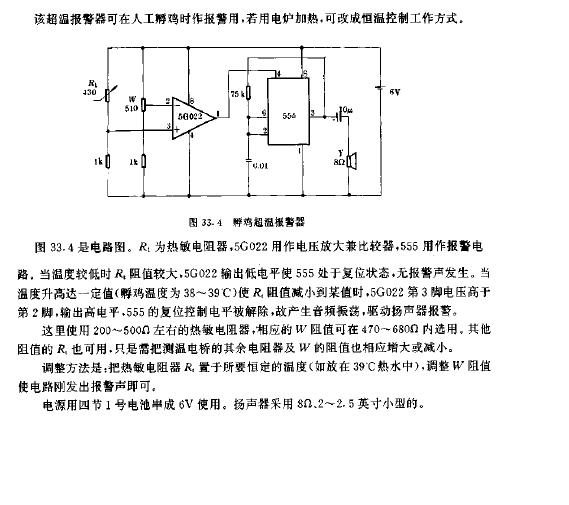
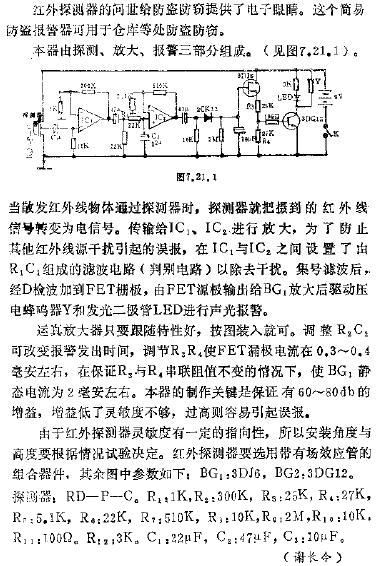
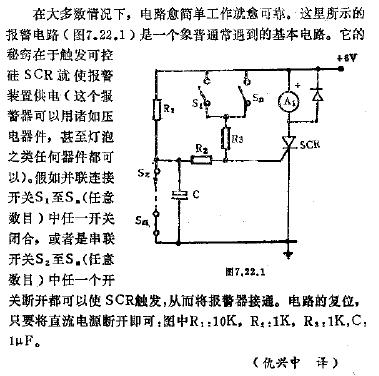
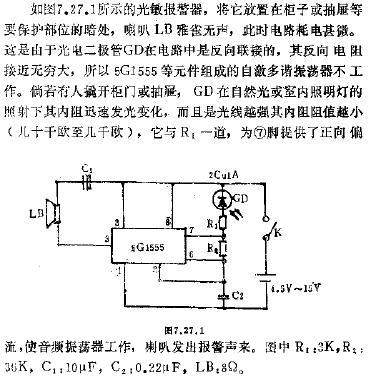
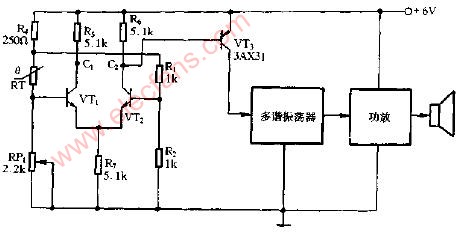
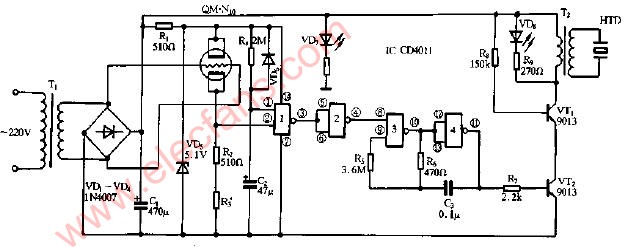
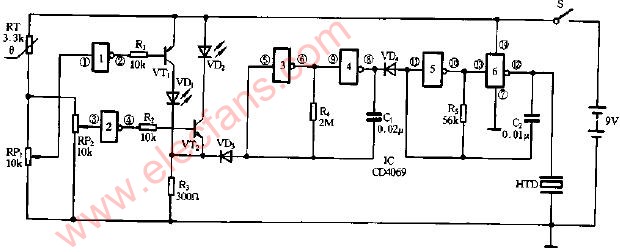
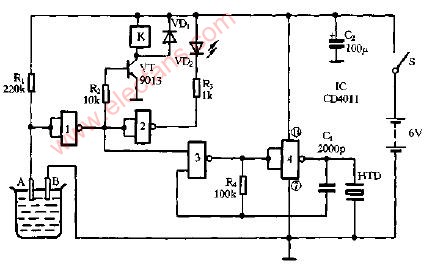
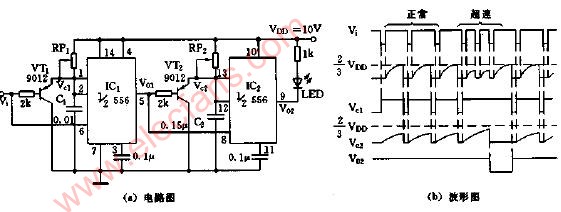
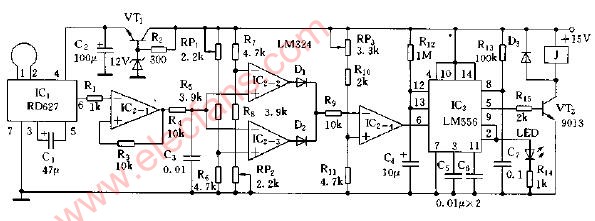
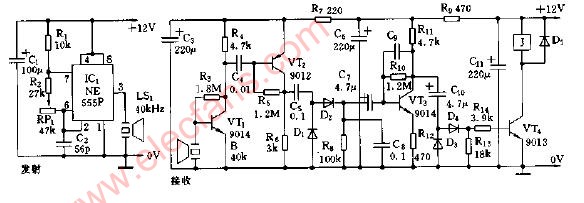
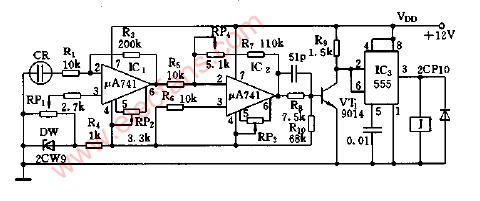
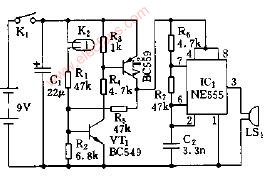
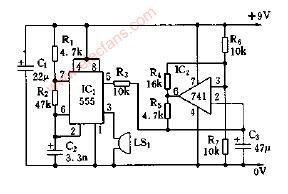
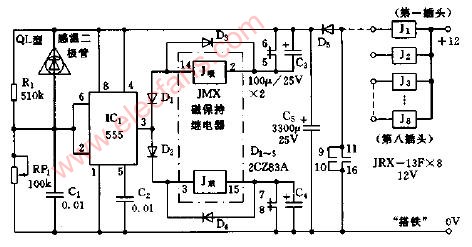
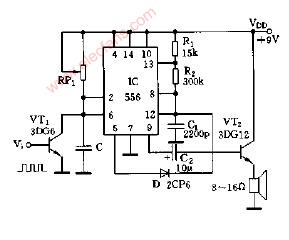
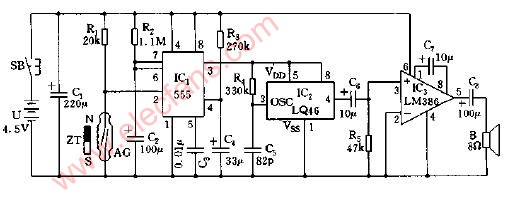
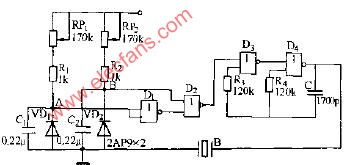
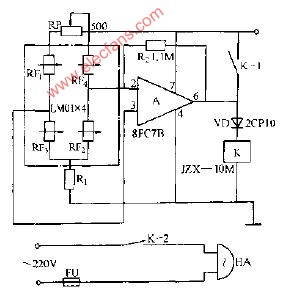
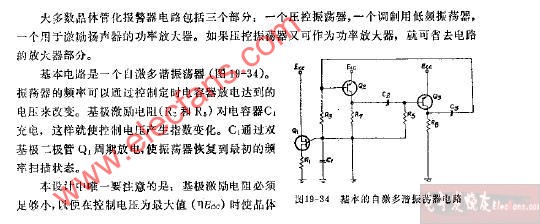

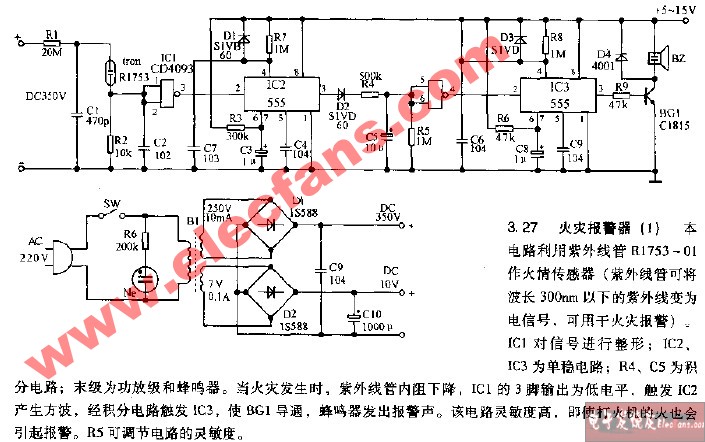
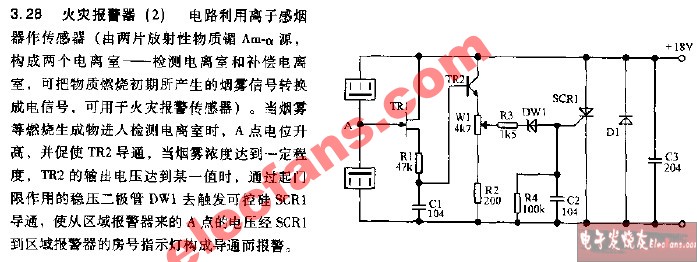
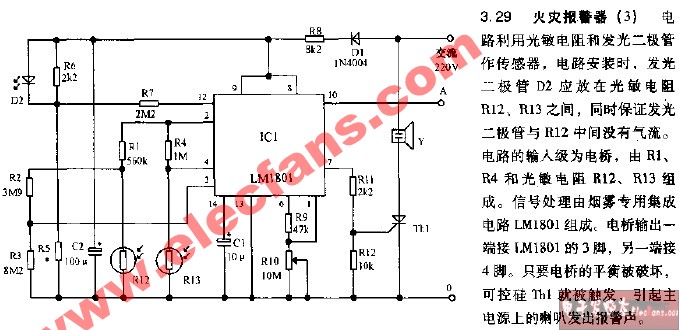
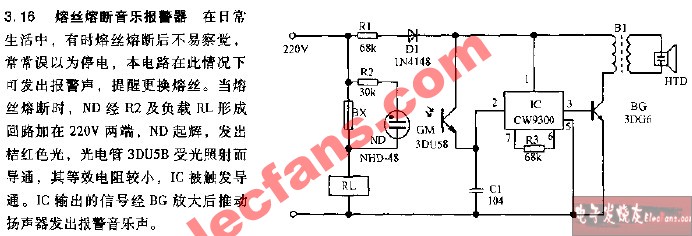
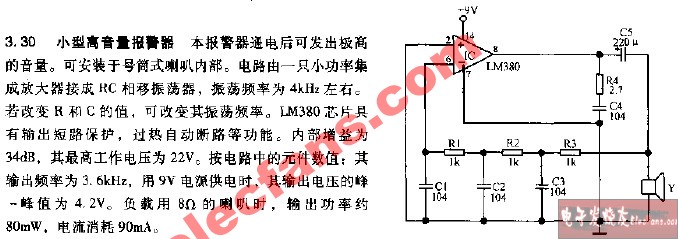
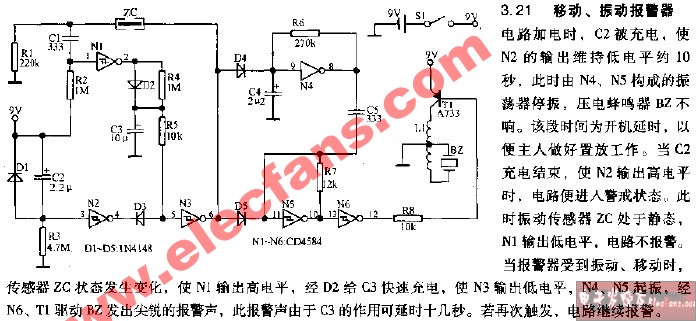
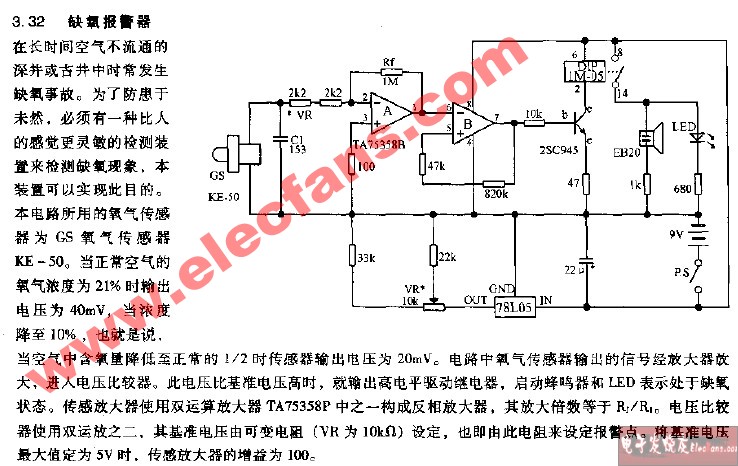
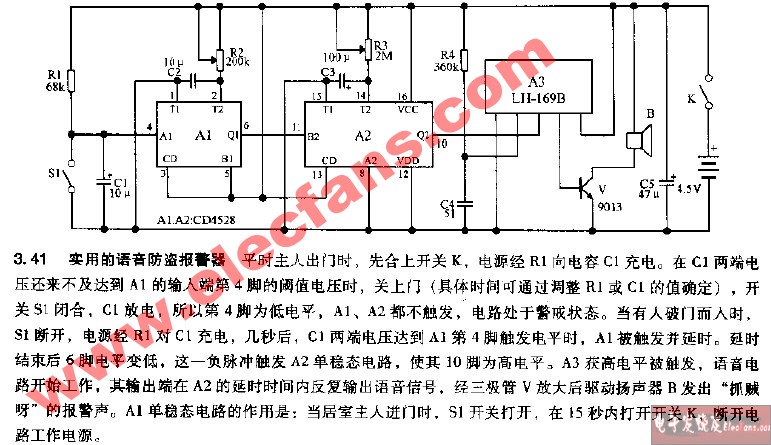
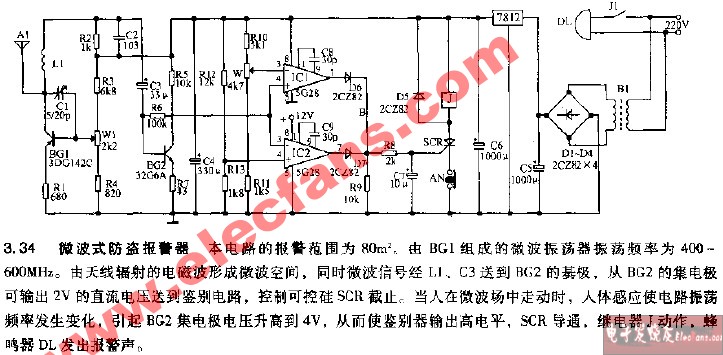
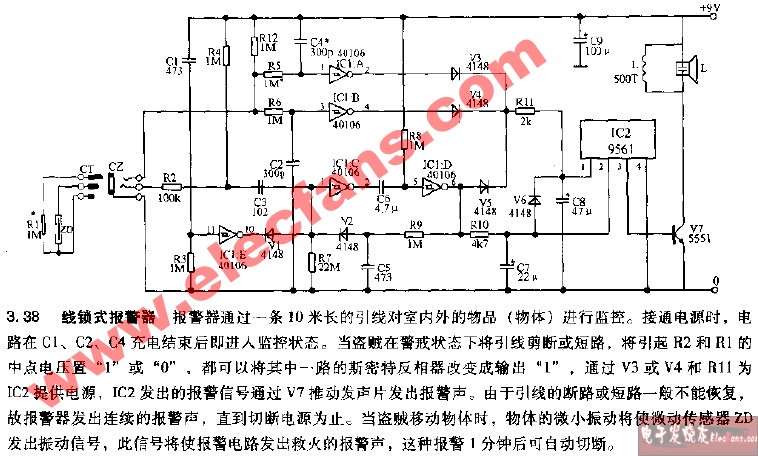
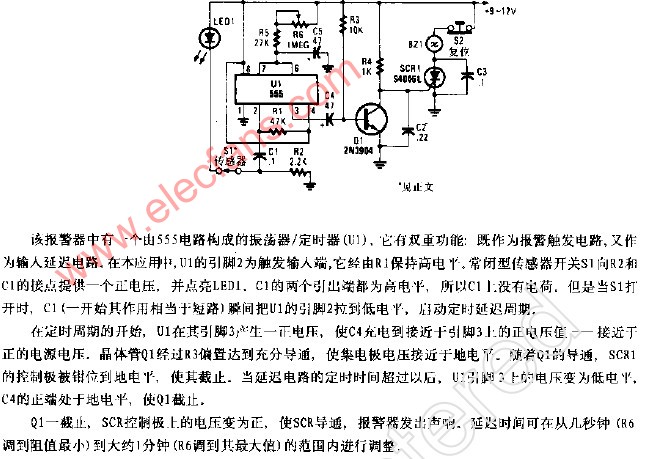
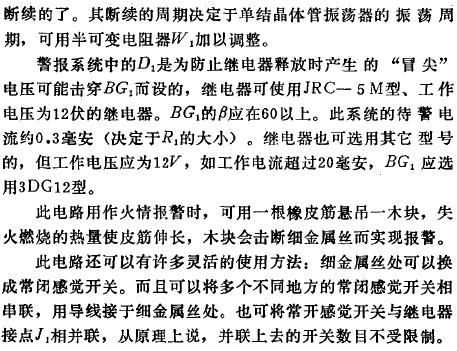










評論